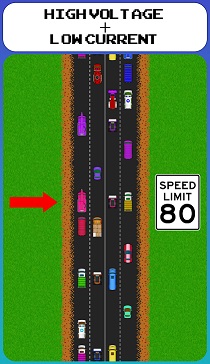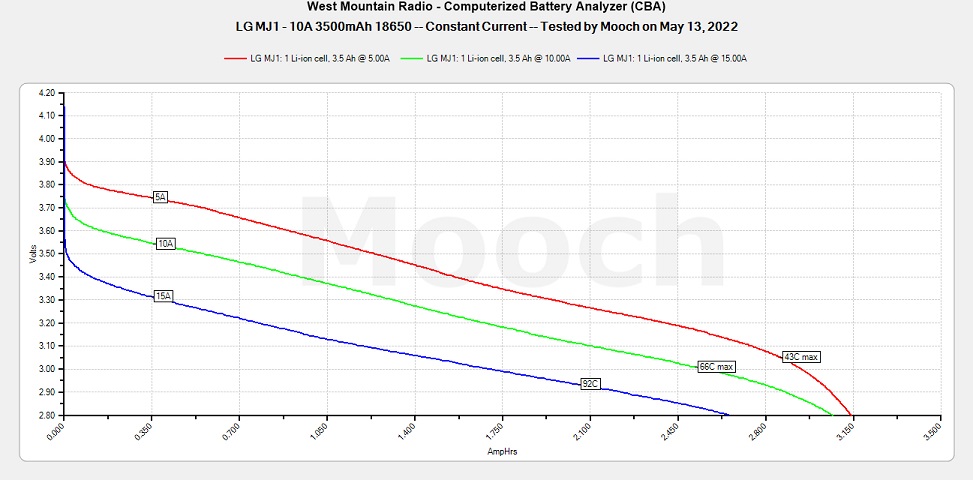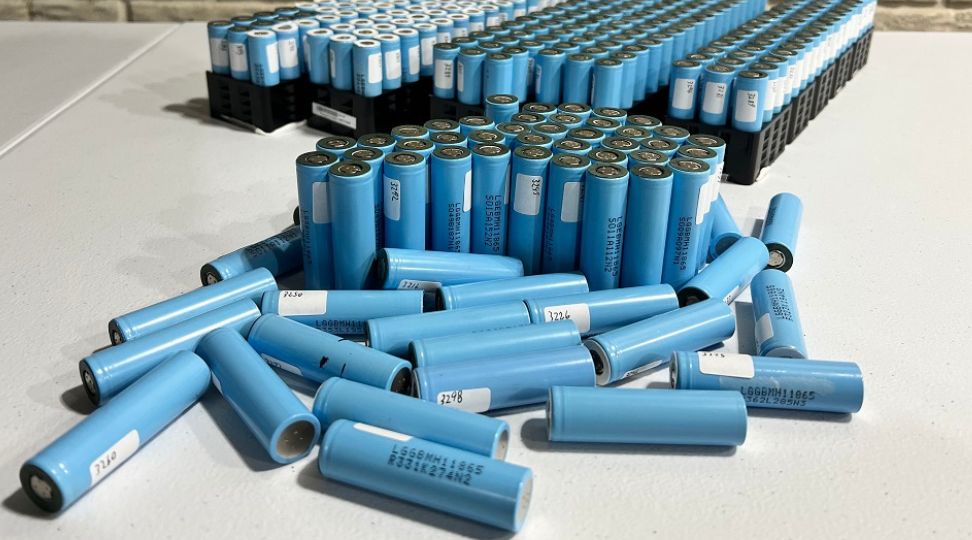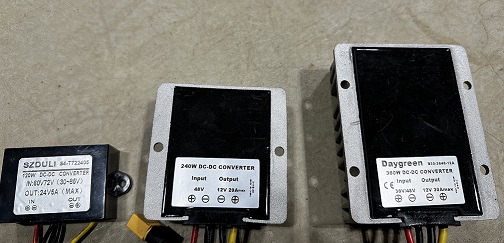
Why There Is More To Capacity Than Amp Hours
Table of Contents
In the battery world, capacity is often discussed in terms of Ah (amp hours). If only the amp hours are considered, then a battery with higher amp hours would always be able to store more energy than a battery with lower amp hours. This, however, is not always the case. This is because there is more to capacity than simply amp hours alone.
Understanding battery capacity extends beyond simply considering amp hours (Ah), which merely measures the amount of current a battery can deliver over time. A more comprehensive metric is watt-hours (Wh), which incorporates both the current (amps) and the force driving that current (voltage). It's essential to understand these different units—amp hours, volts, and watt hours—to grasp how much energy a battery can provide. Two batteries with the same amp hours but different voltages will have different usable capacities, as the watt-hours calculation demonstrates.
Battery efficiency and discharge rate also significantly impact a battery's capacity. Battery efficiency is the ratio of the energy you can retrieve from a battery to the energy used to charge it. Some energy is always lost during charging due to heat or chemical reactions. The discharge rate refers to how quickly the stored energy is drained from the battery, with faster discharge rates reducing overall capacity. So, when comparing battery capacities, it's super important to consider all these elements—amp hours, voltage, watt-hours, efficiency, and discharge rate, rather than just amp hours alone.
To truly understand measuring battery capacity, you need an understanding of what amp hours, volts, and watt hours are and how these units relate to each other. Once that happens, it will become clear that watt-hours is a more comprehensive way of thinking about battery capacity.
What is an Amp Hour?
An amp hour also shown as aH is a measure of amps over time. If one amp is flowing for one hour, then that is an amp hour worth of current flow. In the context of battery ratings, an amp hour indicates how many amps a battery can deliver over a period of time. It is calculated by testing the battery with a constant current load and measuring how long it takes for the voltage to go from fully charged to LVC (Low Voltage Cutoff). If the test current was 700ma and the cell lasted for 5 hours before its voltage reached LVC, then that means the cell is good for 3.5 Ah.
700ma Test Current x 5 hours run time = 3500maH(3.5Ah)

What is a Volt?
Voltage can be thought of as the force or 'pressure' that pushes the current (amps) out of the battery and into the load. As you would expect, this significantly affects the total amount of work or energy that a battery can produce. Two batteries could have the same ampere-hours but different voltages will have totally different usable capacities.
What is a Watt?
Watts are the measure of total power, and watts are found by multiplying the amps by the volts. If you are wondering, ‘What is the relationship between amps, volts, and watts?’, you can think of it like cars traveling down a highway. The density of the cars on the road is like the amps and the speed of the cars is like the volts. The overall amount of energy, if keeping with the analogy, would be the number of cars that pass a particular point (the red arrow).
If there are very few cars on the road (low current 10A) but they are moving very quickly down the highway (high voltage 120V), then a large number of cars will pass any given point (1200 watts).


What Is A Watt Hour?
Now that we have a clear understanding of what a watt is, we can move on to watt-hours. A watt-hour also shown as wH is just like an amp hour, it's the number of watts that are transferred over the course of an hour. If a load of 500 watts is run for 30 minutes, then 250-watt hours will have been used. A watt hour incorporates both the current (amps) and the force driving that current (voltage).
Why Watt-Hours Matter
The real-world implications of watt-hours versus amp-hours are significant, especially when comparing batteries for different devices or applications.
Consider two batteries, each with a capacity of 100Ah. Battery A operates at a voltage of 12V, while Battery B operates at 24V. Based on amp hours alone, these batteries seem identical. However, when we consider watt-hours, Battery A has a capacity of 1,200Wh (100Ah x 12V), while Battery B has a capacity of 2,400Wh (100Ah x 24V). Despite having the same ampere-hours, Battery B can deliver twice as much energy as Battery A due to its higher voltage.
The watt-hours metric becomes even more important for applications like electric vehicles or DIY power wall systems because the power requirement isn't just about the amount of charge, but also about the work that charge can do — which is determined by both the current and voltage.
Amp hours may be the more commonly discussed metric, but if you have an understanding of watt-hours, you will have a more comprehensive understanding of a battery's capacity. This is because watt hours take into consideration both the amount of charge a battery can deliver (amps) and the 'pressure' or force driving that charge(voltage).
The Impact of Battery Efficiency
Regardless of how you calculate capacity, be it amp hours, watt hours, or any other metric, battery efficiency also plays a significant role in the overall performance of a battery. Battery efficiency is the ratio of energy you can get out of the battery to the energy you put into it during charging. Not all the energy put into the battery can be retrieved as some is lost in the form of heat or chemical reactions.
For example, if it takes 120Wh of energy to charge a battery, and you can only get 100Wh of energy out of it, then the battery is said to have an efficiency of 83% (100Wh ÷ 120Wh x 100%). This factor can also greatly influence the amount of usable energy a battery can provide. Note that this only comes into play at higher discharge currents. If you are not stressing a lithium-ion battery (charging it too fast or discharging it too fast) the charging and discharging process itself is almost 100% efficient.
It is important to keep in mind, however, that in order to charge a lithium-ion battery, you must use a constant current regulator which, at best, will be around 95% efficient, so there is always some level of loss.
Effect of Discharge Rate on Battery Capacity
Regardless of how efficient your charge process is, if you are doing high drain discharge, you are not going to get the rated capacity of your cells. This means that whether you calculate using amp hours or the more informative watt-hours, it will always be less if your discharge rate is high.
Batteries will have a lower capacity when they are discharged quickly. This is due to Peukert's Law, which states that the faster a battery is drained, the less overall capacity it will have. This means that the real-world capacity of a battery will always be lower than its rated capacity if it's used above 0.2C.
Understanding battery capacity goes beyond just looking at the amp hours. Factors such as voltage, watt-hours, battery efficiency, the measure of internal resistance, and discharge rate all play a significant role in determining how much energy a battery can realistically provide. As such, the watt-hour measurement is a more holistic approach to understanding and comparing battery capacities. By taking into account all these factors, you can make better-informed decisions when choosing a battery for a particular application.
Conclusion
Comprehending battery capacity is more complex than simply evaluating amp hours (Ah), which only denotes the amount of current a battery can output over a specified period.
A better metric to consider is watt-hours (Wh), which takes into account both the current (amps) and the driving force behind that current (voltage). To truly understand a battery's energy capacity, you have to understand what these units mean—amp hours, volts, and watt-hours.
Also, the capacity of a battery is not static and fixed but instead dynamic and changes. It is influenced by its efficiency and discharge rate. Battery efficiency represents the proportion of energy that can be extracted from a battery compared to the energy expended in charging it, with some energy invariably lost in the process. The discharge rate also is linked to the overall capacity, with higher discharge rates resulting in lower observed capacities. So, when gauging battery capacities, take into account all these factors—amp hours, voltage, watt-hours, efficiency, and discharge rate.
We hope this article helped you learn everything about why there is more to capacity than amp hours. Thanks for reading!



